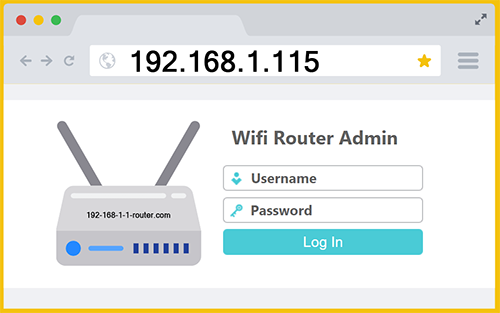192.168.1.115
 Guide to 192.168.1.115 Admin Login
Guide to 192.168.1.115 Admin Login
Many smart devices on your local network including routers hubs and WiFi enabled appliances use private IP addresses like 192.168.1.115 to access their internal settings. To begin make sure your phone tablet or computer is connected to the same Wi-Fi network as the device you want to manage.
Open a browser such as Chrome or Safari and type 192.168.1.115 directly into the address bar at the very top of the screen not into the search field. If the device is turned on and the IP address is entered correctly you should see a login page appear. From there enter the appropriate admin username and password. Once logged in you will have full access to the configuration options allowing you to fine tune performance security and other key features based on your needs.
Accessing 192.168.1.115 Settings

To start setting up your device, make sure your phone or computer is connected to the same WiFi network as the one the device is using. Then launch a browser such as Chrome or Firefox and type 192.168.1.115 directly into the address bar at the top of the screen. If everything is entered properly, the login page will load right away and ask for your username and password. Don’t feel like typing it in yourself? Just click the blue button below to go straight to the login screen.
Potential username: admin
Potential password: admin / password
If you are trying to open your device’s settings do not type 192.168.1.115 into Google or ask a tool like ChatGPT. These platforms are built to provide information not to connect with equipment on your local network. Instead of showing the login screen they will just give you search results or explanations. The only way to reach the device is by entering the IP address directly into your online browser’s address bar at the top of the screen. This direct method connects you to the device and gives you access to its settings and configuration options.
192.168.1.115 Explained
192.168.1.115 is a private IP address commonly assigned to devices within home and small business networks. As a private IP it is not accessible from the Internet directly and can only be reached by devices connected to the same local network. Routers typically assign addresses like 192.168.1.115 dynamically via DHCP when new equipment joins the network, making it easy for multiple devices like laptops, tablets, and smart appliances to coexist without address conflicts.
This particular IP address is frequently used for accessing internal device configuration pages. Equipment such as wireless cameras, smart lighting systems, home automation hubs, and network storage devices often utilize addresses in this range. By navigating directly to 192.168.1.115 through your web browser, you can adjust settings, update firmware, or configure security features tailored specifically to your preferences.
When troubleshooting network connectivity or performing device management, knowing the exact IP address such as 192.168.1.115 can significantly simplify the process. Unlike public IP addresses which are exposed to the global Internet, this private IP helps protect your local devices from outside interference. This controlled environment allows you to securely manage your connected technology, ensuring optimal functionality and network safety.
Furthermore, understanding how private IP addresses like 192.168.1.115 function can empower you to optimize your home network effectively. Assigning fixed IP addresses to certain critical devices, such as printers or media servers, ensures consistent access and easier network management. Whether you’re improving network security, streamlining device communication, or simply exploring the advanced capabilities of your connected technology, familiarizing yourself with 192.168.1.115 is a practical step toward mastering your home network.
192.168.115
The IP address 192.168.115 is not valid because it is incomplete. A proper IPv4 address must have four numerical segments, known as octets, separated by dots. Each octet can range from 0 to 255. In this case, 192.168.115 only has three segments instead of the required four, making it unusable for accessing devices on your local network. When you try to enter this into Chrome, it will likely trigger a search engine result or an error message, because the system does not recognize it as a complete address.
To fix this and successfully connect to a smart device, you need to use the correct format by adding the missing fourth segment. In most home networks, private IP addresses follow the 192.168.1.xxx structure. One popular example is http 192 168.1.1 which is used by hundreds of millions of routers across the world. When trying to connect to a smart device in your home, changing the address to 192.168.1.115 makes it valid and complete. Enter this corrected version into the browser’s address bar (not the search bar) while connected to the same Wi-Fi network as the device. This should take you to the device’s login screen, where you can access its settings and controls.